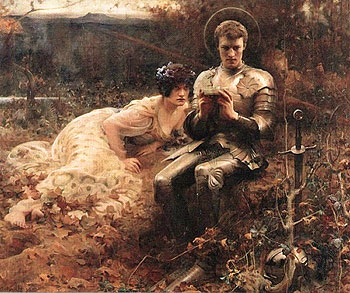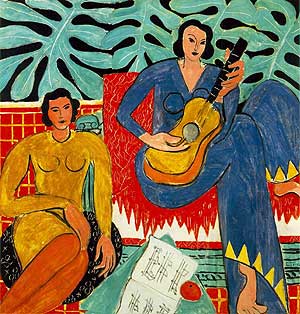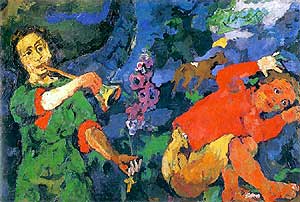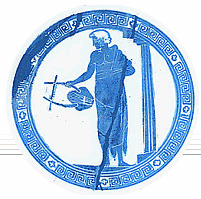|
ROMANTIC ERA, IMPRESSIONISM AND EXPRESSIONISM
| ROMANTIC
ERA (1827-1900) |
 |
|
 |
The
years between 1827 (the death of Beethoven) and 1900 (the
turn of the century). The Romantic period takes its name from
literary “romances” which were expressive stories
and poems about heroic historic or legendary subjects. Romanticism
tends to be personal and subjective stressing freedom, intense
emotion and individuality.
Some
historians feel the Romantic period was a revolt by sensitive,
creative artists against the onrushing industrial revolution
and its mechanization of work which seemed to threaten the
dignity of man. The Romantic period was a time of highly individual
musical styles. Composers got their inspirations from life
experience, from nature and its wildness, the supernatural,
poetry, ancient mythology, the romantic ideal of love and
the notion of unfulfilled love, and the suffering from a loss
or death of a loved one. Small spontaneous and flexible forms
(miniatures), programmatic forms, or large grandiose forms
dictated how the music was written. Many of the Classical
forms such as sonata, theme and variations, minuet & trio
and rondo form, which evolved in order to take advantage of
the dramatic possibilities offered by homophony, were abandoned.
The new Romantic forms were governed by spontaneity, expression,
ideas, individualism and creative freedom. Romanticism take
its name form the medieval “romances,” which were
stories and poems about heroic figures written in one of the
romance languages of the people.
Beethoven’s
innovations and contributions served as a catalyst for Romantic
era composers. He was considered by many to be the liberator
of music, as the person who broke the molds and led the way.
Romanticism represents an approach to life and to art completely
different from that of Classicism. Whereas Classicism tends
to be traditional and objective, Romanticism is individual
and subjective, when Classicism shows emotional restraint
then Romanticism is emotionalistic. The composers from the
Romantic period include: Frederic Chopin, Franz Liszt, Franz
Schubert, Robert Schumann, Johannes Brahms, Piotr Tchaikovsky
and Gustav Mahler.
ROMANTIC
THEMES AND INSPIRATIONS
| LEGENDS
and myths from faraway places and times. |
 |
|
 |

Hacker,
Arthur, 'The Temptation of Sir Percival', 1894, City Art
Gallery, Leeds |
Extreme
expression, fantastic things, marvelous and legendary as opposed
to the mundane aspects of the present.
 Wagner writes the Ring of the Nibelung (an early medieval
cycle of Nordic myths).
Wagner writes the Ring of the Nibelung (an early medieval
cycle of Nordic myths).
 Berlioz imports Gregorian Chant into his Symphony Fantastic
.
Berlioz imports Gregorian Chant into his Symphony Fantastic
.
 Mendelssohn, Berlioz, Verdi, and Tchaikovsky use Shakespeare
as the basis
Mendelssohn, Berlioz, Verdi, and Tchaikovsky use Shakespeare
as the basis
 for their
music works. for their
music works.
 Mendelssohn revives the music of Johann Sebastian Bach.
Mendelssohn revives the music of Johann Sebastian Bach.
| NATURE
and the wilder aspects of nature. |
 |
|
 |

Bierstadt,
Albert, 'Yosemite Valley', 1866, Collection of Joann and
Julian Ganz, jr. |
 Mysterious forests.
Mysterious forests.
 Night time.
Night time.
 Storms.
Storms.
 Untamed seas.
Untamed seas.
 Music depended on nature descriptions.
Music depended on nature descriptions.
 With the urbanization of the industrial revolution going
on nature, wild and unfettered
With the urbanization of the industrial revolution going
on nature, wild and unfettered  by
civilization provided a sense of purity, something uncontrollable
by man. by
civilization provided a sense of purity, something uncontrollable
by man.
Listen
to a Nocturne by Frederic Chopin. This night piece is intended
to convey the mysterious, intimate and reflective mood night
time brings on:
|
LOVE and the yearning for something just
beyond ones grasp. |
 |
|
 |
 |
 |
Klimt, Gustav, The Kiss,
1907/08, Austrian Gallery
|
 The love of an unattainable woman .
The love of an unattainable woman .
 A hero warrior in conquest of power and love.
A hero warrior in conquest of power and love.
 Unfulfilled desires, unrealized dreams.
Unfulfilled desires, unrealized dreams.
| MACABRE
and supernatural subjects, |
 |
|
 |
nightmarish,
awful, ugly, and within this terrible ugliness a kind of weird
supernatural, anti-rationality. The idea of the less sense
something makes the better off it is. The wilder, crazier,
weirder uglier the more horrific something can be……the
better.
Listen
to the final movement in Berlioz's Symphony Fantastic. This
section is describing a moon lit night in a grave yard, mist
is on the ground and a casket filled with a headless body
is lying near by. This piece was written in 1831 only a few
years after Beethoven died!
| DEATH
and resignation. |
 |
|
 |

Bramley,
Frank, 'A Hopeless Dawn', 1888, Tate Britain |
The
experience of a loss and the profound emotion that comes when
the experience in the death of someone close or of great importance.
The affect of this experience on the meaning of life.
| IMPRESSIONISM |
 |
|
 |
IMPRESSIONISM
is an artists conception of reality as depicted by color,
light and atmosphere. The
French artistic movement in the early 20th Century had visual
artists such as Monet and Degas preoccupied with depicting
water. Also, these artists were concerned with the effects
of light, color, and atmosphere. Water depicts shades of light
in its movement and reflections off it’s surface. Impressionistic
painters were not concerned with the literal depiction of
an object or person but the with the way light, color, shade
or atmosphere influenced the depiction of that object or personthe
upcoming season: chooses music, soloists etc.
 |
 |
Henri
Matisse, La Musique. |
Impressionistic
music (especially that of Claude Debussy) creates light by
the lack of strong rhythmic articulation and accentuation.
It creates color by the tremendous reliance on timbre or the
tone color of the orchestras varied instruments. Atmosphere
is developed by long held out notes (pedal tones), or long
successions of chords creating a tonal haze. These chords
lack tension and therefore resolution but provide a strong
sense of atmosphere.
EXPRESSIONISM
is a movement in art and music where feelings are expressed
by the subjective reaction to reality rather than the objective
depiction of reality.
 |
 |
Kokoschka,
Oscar,
'Power of Music', 1920 |
Expressionism
is centered on the inner world of dreams, the subconscious
and in many other of the many discoveries of Sigmund Freud.
Early 20th Century composers such as Arnold Schoenberg, Alban
Berg and Anton Webern were preoccupied with the expressionists
thoughts and issues.
|









